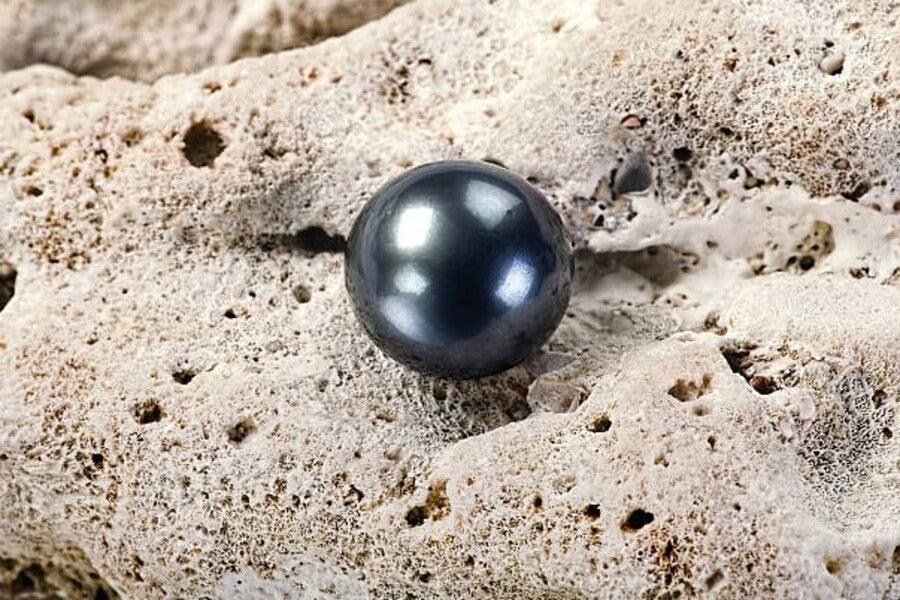Key Takeaways
- Discover the fascinating world of shell pearls , particularly Tahitian pearls, and learn how the Pinctada margaritifera and Pinctada imbricata oysters create these treasures.
- Explore their habitat, their preference for crystal clear waters and the ideal depths for their development.
The Famous Shell Pearl
Tahitian pearls are world famous for their exceptional quality. These little marine wonders are the fruit of the work of the pearl oysters Pinctada margaritifera, Pinctada maxima and Pinctada fucata, true artists of the sea!
Pinctada imbricata, or the famous Caribbean mother-of-pearl, is also part of the mollusk star club. It roams the four corners of the globe: as its name suggests, it reigns in the Caribbean, but it has also set up shop on the north, east and south coasts of the United States, all along East Africa, in the Mediterranean, the Red Sea and even in Australia.

Tahitian pearls, renowned for their quality, are produced by pearl oysters, including the Pinctada imbricata, found in the Caribbean and elsewhere. Source: istockphoto
With a life expectancy of five years, it lives comfortably between 5 and 30 meters deep, although it has a slight preference for eight meters. A fan of crystal clear waters, a bit like coral, it hates capricious waters where temperature, salinity or oxygen play yo-yo.
It also hates muddy bottoms, preferring stable areas to better benefit from its diet of phytoplankton and floating particles.
How Do Pearl Oysters Make Pearls?
The birth of a pearl in a shell by the infiltration of an uninvited intruder between the mantle and the shell. Imagine that the oyster catches a splinter, and obviously, it does not appreciate it. Its reflex? It carefully swaddles it, a bit like making a cocoon for it.
This precious coat uses the same mother-of-pearl that is used to make the shell, and layer by layer, the little intruder is transformed into a magnificent pearl.

A pearl is formed when the oyster surrounds a mother-of-pearl intruder,
transforming it into a jewel. Source: Maison Valencourt
Some pearl oysters, such as the Pinctada mazatlanica, are champions of endurance, capable of depositing three or four layers of mother-of-pearl per day. But be careful, each layer is so thin that we are at the micrometric level: we are talking about a thousandth of a millimeter! It generally takes 24 months for a pearl oyster to produce a pearl 5 millimeters in diameter, or about the height of twenty stacked playing cards. A matter of patience!
Contrary to popular belief, pearls are not necessarily born from a rebellious grain of sand. This legend, while seductive, has been largely debunked. Pearl oysters, which live in sandy bottoms, are in fact experts in the art of expelling sand. Instead, they make do with small parasites or pieces of shell that they encapsulate to create their treasures.

Pearls are born from parasites or fragments of shells, not from grains of sand.
Source: Gisel B
Most natural pearls are therefore formed in response to a small parasitic invader. Boring worms, for example, penetrate the hard shell of an oyster, which triggers a protective reaction from the mantle. The latter begins to secrete nacre around the intruder, transforming it into a pretty little shiny ball, which is none other than a pearl.
Natural pearls vary in size, from 1 millimeter (0.03 inches) to an average of 7 millimeters (0.27 inches). Specimens larger than 10 millimeters (0.39 inches) are truly rare and highly prized treasures. As a general rule, the larger a natural pearl, the more it is worth its weight in gold.
What is the place of pearls in the life of oysters?
Pearls, these small marine jewels, are in reality calcareous concretions created by the mollusk in reaction to an impurity that it could not digest. It can be a grain of sand or even a larva which, once trapped in the shell, triggers a camouflage operation worthy of the greatest strategists.

Pearls are calcareous concretions formed by the mollusk in response to an impurity, such as a grain of sand or a larva, which it encapsulates to protect itself.
Source: Laskers
Unable to get rid of the intruder, the oyster wraps it up in successive layers. First step: a thin, organic membrane. Then, a layer of calcareous prisms, like a small mineral rampart. Finally, the final touch: a layer of mother-of-pearl, the same shiny material that adorns the inside of the shell. This is how a pearl is born in a shell, with simple ingredients:
- 85% aragonite microcrystals (calcium carbonate),
- 12% conchiolin, a protein that acts as cement,
- And about 3% water, because even a pearl needs some hydration!
The most impressive thing about all this is that no matter the initial shape of the intruder, the pearl will always be perfectly round and smooth, provided that this intruder is tiny. The mollusk, like a true architect, corrects the imperfections as it goes along, adapting the thickness of the layers to obtain this spherical masterpiece.

The intruder, if tiny, always becomes a round and smooth pearl, because the mollusk adjusts the layers of nacre precisely. Source: istockphoto
An oyster can deposit up to 10 layers of mother-of-pearl per day, each layer being as thin as a micron. Patience is required: it generally takes between 2 and 4 years to produce a pearl of good size. Yes, you read correctly, a pearl is a long-term job!
Conclusion
In conclusion, pearls, whether from exotic seas or nearby oceans, are much more than just ornaments. They are the result of a fascinating process where an oyster, faced with a small invader, chooses to respond by creating a masterpiece. Natural or cultured, these pearls are a brilliant reminder of how nature knows how to transform the unexpected into pure beauty.
Ultimately, behind every pearl lies a story of patience and resilience, where even the most insignificant intruder becomes the object of so much care and attention that it ends up embodying perfection.
So, the next time you wear a pearl, imagine this long underwater process, this delicate transformation, and appreciate it not only for its beauty, but also for the remarkable adventure it represents. Yes, a pearl in shell is a lesson in elegance, but also in the art of living!


